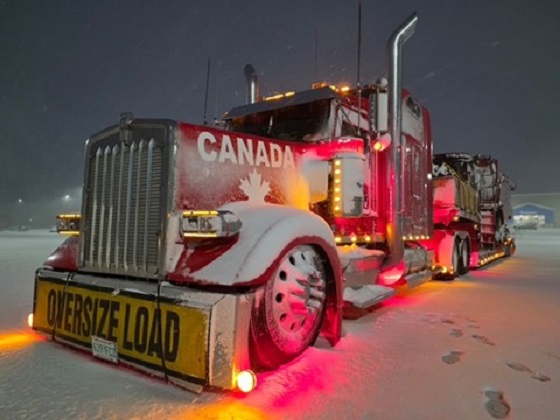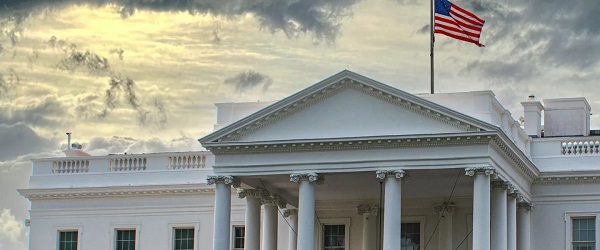Alberta
Alberta and British Columbia set to gain federal ridings from Liberal-held Ontario areas

From LifeSiteNews
Three Liberal-held ridings in Toronto and northern Ontario are set to be given to British Columbia and Alberta this spring, providing a potential benefit to the Conservative Party in the next election.
Alberta and British Columbia are set to gain more federal ridings, which could increase Conservatives’ chances of a federal victory in the next election.
According to a memo published October 10 by Blacklock’s Reporter, the next federal election will see fewer Members of Parliament (MPs) in Toronto and northern Ontario, and more in Okanagan, British Columbia, and suburban Alberta.
“One of our election readiness activities this year relates to electoral boundaries redistribution,” Chief Electoral Officer Stéphane Perrault testified at the House affairs committee.
The changes will come into effect under the Electoral Boundaries Readjustment Act on April 22, 2024, and elections after that date will “take place under the new map.”
The redistribution aims to rebalance the seats proportionately to population growth within the provinces. It will mean a record 343 seats in the House of Commons. Currently, ridings are divided into 122 in Ontario, 78 in Québec, 43 in British Columbia, 37 in Alberta, 14 in Saskatchewan, 14 in Manitoba, 11 in Nova Scotia, 10 in New Brunswick, 7 in Newfoundland and Labrador, 4 in Prince Edward Island and 1 each in the Yukon, Northwest Territories and Nunavut.
Under the new distribution, Toronto will lose the Scarborough-Agincourt riding held by Liberal MP Jean Yip, going from 25 to 24 federal ridings. Last election, all 25 Toronto ridings voted for the Liberals, at 51 percent support, making it the party’s largest popular vote in any major Canadian city.
“It is necessary to move a district to other areas of the Greater Toronto Area that, while equally diverse, are growing much faster than the City of Toronto,” said the Final Report of The Federal Electoral Boundaries Commission For The Province Of Ontario.
“The population of the City of Toronto only grew by 6.9 percent from 2011 to 2021 compared to 11.7 percent for the remainder of the province,” it wrote, arguing that keeping 25 seats in Toronto would “unfairly impact other parts of Ontario.”
Additionally, Northern Ontario is set to lose one of its nine ridings. In 2021, most ridings in Northern Ontario voted Liberal, with the exception of Kenora (Conservative MP Eric Melillo) and Timmins-James Bay (New Democrat MP Charlie Angus).
“We are in a very fragile time for democracy,” MP Angus testified May 8 at the House affairs committee. “We must do our best to reassure citizens that their voice counts and that they are being heard.”
Ontario’s ridings are set to be given to western provinces. British Columbia, which typically votes Liberal or New Democrat, will gain one new seat, Vernon-Lake Country in Okanagan.
On the other hand, Alberta, a historically Conservative province, is set to gain three ridings in Calgary McKnight, Airdrie-Chestermere and Spruce Grove-Leduc.
The Alberta ridings are not the only factor pointing to a Conservative victory next fall. Recently, Canadians have become increasingly fed up of Prime Minister Justin Trudeau’s leadership.
A September poll revealed that Trudeau’s disproval rates have reached a record high of 57 percent. The number should not come as a surprise as the polling also showed that 72 percent of Canadians are concerned with rising costs of living amid Trudeau’s ever-increasing carbon tax and energy regulations.
According to a September 5 report by Statistics Canada, food prices are rising faster than the headline inflation rate – the overall inflation rate in the country – as staple food items are increasing at a rate of 10 to 18 percent year-over-year when compared to the overall inflation rate of 4 percent.
Earlier this year, the Bank of Canada admitted that Trudeau’s federal “climate change” programs, which have been deemed “extreme” by some provincial leaders, are indeed helping to fuel inflation.
Furthermore, as a result of the Trudeau government’s Online News Act, Canadians can no longer access news on Facebook or Instagram as Meta refuses to pay the fees mandated by the act.
On the other hand, Conservative Party leader Poilievre has openly condemned the Online News Act, comparing it with George Orwell’s dystopian novel “1984.”
Furthermore, Poilievre has repeatedly promised Canadians that he will axe the carbon tax and restore the economy if elected prime minister.
Poilievre, however, is not without his own host of issues in the eyes of social conservatives.
While Trudeau came out to condemn the September 20 Million Person March against LGBT indoctrination in schools, Poilievre initially failed to support the immensely popular pro-family effort, and even went as far as having his office tell his caucus to refrain from making any statements about the movement.
Poilievre did eventually break his silence on the matter, slamming Trudeau for his condemnation of concerned parents and encouraging the federal government to leave LGBT discussions to families and not the education system.
Alberta
Carney forces Alberta to pay a steep price for the West Coast Pipeline MOU

From the Fraser Institute
The stiffer carbon tax will make Alberta’s oil sector more expensive and thus less competitive at a time when many analysts expect a surge in oil production. The costs of mandated carbon capture will similarly increase costs in the oilsands and make the province less cost competitive.
As we enter the final days of 2025, a “deal” has been struck between Carney government and the Alberta government over the province’s ability to produce and interprovincially transport its massive oil reserves (the world’s 4th-largest). The agreement is a step forward and likely a net positive for Alberta and its citizens. However, it’s not a second- or even third-best option, but rather a fourth-best option.
The agreement is deeply rooted in the development of a particular technology—the Pathways carbon capture, utilization and storage (CCUS) project, in exchange for relief from the counterproductive regulations and rules put in place by the Trudeau government. That relief, however, is attached to a requirement that Alberta commit to significant spending and support for Ottawa’s activist industrial policies. Also, on the critical issue of a new pipeline from Alberta to British Columbia’s coast, there are commitments but nothing approaching a guarantee.
Specifically, the agreement—or Memorandum of Understanding (MOU)—between the two parties gives Alberta exemptions from certain federal environmental laws and offers the prospect of a potential pathway to a new oil pipeline to the B.C. coast. The federal cap on greenhouse gas (GHG) emissions from the oil and gas sector will not be instituted; Alberta will be exempt from the federal “Clean Electricity Regulations”; a path to a million-barrel-per day pipeline to the BC coast for export to Asia will be facilitated and established as a priority of both governments, and the B.C. tanker ban may be adjusted to allow for limited oil transportation. Alberta’s energy sector will also likely gain some relief from the “greenwashing” speech controls emplaced by the Trudeau government.
In exchange, Alberta has agreed to implement a stricter (higher) industrial carbon-pricing regime; contribute to new infrastructure for electricity transmission to both B.C. and Saskatchewan; support through tax measures the building of a massive “sovereign” data centre; significantly increase collaboration and profit-sharing with Alberta’s Indigenous peoples; and support the massive multibillion-dollar Pathways project. Underpinning the entire MOU is an explicit agreement by Alberta with the federal government’s “net-zero 2050” GHG emissions agenda.
The MOU is probably good for Alberta and Canada’s oil industry. However, Alberta’s oil sector will be required to go to significantly greater—and much more expensive—lengths than it has in the past to meet the MOU’s conditions so Ottawa supports a west coast pipeline.
The stiffer carbon tax will make Alberta’s oil sector more expensive and thus less competitive at a time when many analysts expect a surge in oil production. The costs of mandated carbon capture will similarly increase costs in the oilsands and make the province less cost competitive. There’s additional complexity with respect to carbon capture since it’s very feasibility at the scale and time-frame stipulated in the MOU is questionable, as the historical experience with carbon capture, utilization and storage for storing GHG gases sustainably has not been promising.
These additional costs and requirements are why the agreement is the not the best possible solution. The ideal would have been for the federal government to genuinely review existing laws and regulations on a cost-benefit basis to help achieve its goal to become an “energy superpower.” If that had been done, the government would have eliminated a host of Trudeau-era regulations and laws, or at least massively overhauled them.
Instead, the Carney government, and now with the Alberta government, has chosen workarounds and special exemptions to the laws and regulations that still apply to everyone else.
Again, it’s very likely the MOU will benefit Alberta and the rest of the country economically. It’s no panacea, however, and will leave Alberta’s oil sector (and Alberta energy consumers) on the hook to pay more for the right to move its export products across Canada to reach other non-U.S. markets. It also forces Alberta to align itself with Ottawa’s activist industrial policy—picking winning and losing technologies in the oil-production marketplace, and cementing them in place for decades. A very mixed bag indeed.
Alberta
West Coast Pipeline MOU: A good first step, but project dead on arrival without Eby’s assent

The memorandum of understanding just signed by Prime Minister Mark Carney and Premier Danielle Smith shows that Ottawa is open to new pipelines, but these are unlikely to come to fruition without British Columbia Premier David Eby’s sign-off, warns the MEI.
“This marks a clear change to Ottawa’s long-standing hostility to pipelines, and is a significant step for Canadian energy,” says Gabriel Giguère, senior policy analyst at the MEI. “However, Premier Eby seems adamant that he’ll reject any such project, so unless he decides not to use his veto, a new pipeline will remain a pipedream.”
The memorandum of understanding paves the way for new pipeline projects to the West Coast of British Columbia. The agreement lays out the conditions under which such a pipeline could be deemed of national interest and thereby, under Bill C-5, circumvent the traditional federal assessment process.
Adjustments to the tanker ban will also be made in the event of such a project, but solely for the area around the pipeline.
The federal government has also agreed to replace the oil and gas emissions cap with a higher provincial industrial carbon tax, effective next spring.
Along with Premier Eby, several First Nations groups have repeatedly said they would reject any pipeline crossing through to the province’s coast.
Mr. Giguère points out that a broader issue remains unaddressed: investors continue to view Canada as a high-risk environment due to federal policies such as the Impact Assessment Act.
“Even if the regulatory conditions improve for one project, what is Ottawa doing about the long-term uncertainty that is plaguing future projects in most sectors?” asks the researcher. “This does not address the underlying reason Carney has to fast-track projects piecemeal in the first place.”
Last July, the MEI released a publication on how impact assessments should be fair, transparent, and swift for all projects, not just the few favoured by Ottawa under Bill C-5.
As of July, 20 projects were undergoing impact assessment review, with 12 in the second phase, five in the first phase, and three being assessed under BC’s substitution agreement. Not a single project is in the final stages of assessment.
In an Economic Note published this morning, the MEI highlights the importance of the North American energy market for Canada, with over $200 billion moving between Canada and the United States every year.
Total contributions to government coffers from the industry are substantial, with tens of billions of dollars collected in 2024-2025, including close to C$22 billion by Alberta alone.
“While it’s refreshing to see Ottawa and Alberta work collaboratively in supporting Canada’s energy sector, we need to be thinking long-term,” says Giguère. “Whether by political obstruction or regulatory drag, Canadians know that blocking investment in the oilpatch blocks investment in our shared prosperity.”
* * *
The MEI is an independent public policy think tank with offices in Montreal, Ottawa, and Calgary. Through its publications, media appearances, and advisory services to policymakers, the MEI stimulates public policy debate and reforms based on sound economics and entrepreneurship.
-

 Agriculture1 day ago
Agriculture1 day agoHealth Canada indefinitely pauses plan to sell unlabeled cloned meat after massive public backlash
-

 COVID-192 days ago
COVID-192 days agoCrown seeks to punish peaceful protestor Chris Barber by confiscating his family work truck “Big Red”
-

 Carbon Tax8 hours ago
Carbon Tax8 hours agoCanadian energy policies undermine a century of North American integration
-

 Indigenous2 days ago
Indigenous2 days agoCanadian mayor promises to ‘vigorously defend’ property owners against aboriginal land grab
-

 Alberta5 hours ago
Alberta5 hours agoWest Coast Pipeline MOU: A good first step, but project dead on arrival without Eby’s assent
-

 Energy5 hours ago
Energy5 hours agoPoilievre says West Coast Pipeline MOU is no guarantee
-

 Alberta2 days ago
Alberta2 days agoPremier Danielle Smith says attacks on Alberta’s pro-family laws ‘show we’ve succeeded in a lot of ways’
-

 Crime1 day ago
Crime1 day agoFBI Seizes $13-Million Mercedes Unicorn From Ryan Wedding’s Narco Network






